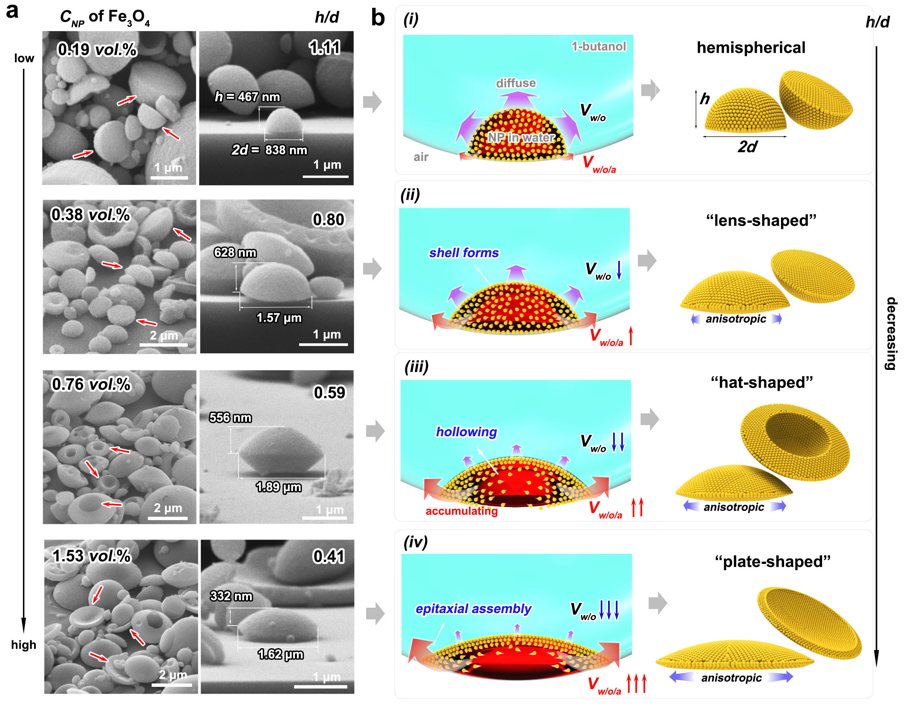
A research team from the Hefei Institutes of Physical Science of the Chinese Academy of Sciences, together with collaborators at the University of California, has developed a novel aerosol-based emulsion system that enables the self-assembly of asymmetric nanostructures—something long considered a major challenge in materials science.
Their work was recently published in Advanced Materials.
Traditional emulsion droplets tend to be spherical due to surface tension, limiting the structural complexity of the materials they help create. While useful in fields like biomedicine and food science, this symmetry makes it hard to achieve advanced functions. Breaking this symmetry has been a key goal, but methods involving surfactants or complex emulsifiers often struggle with stability and contamination.
The new system sidesteps those issues by creating "transient emulsion aerosols" —short-lived, surfactant-free droplets formed by atomizing a two-phase liquid. These droplets allow nanoparticles to self-assemble in midair, without relying on stabilizing chemicals. The dynamic diffusion process brings interfacial tension close to zero, enabling the formation of non-spherical structures.
"With this approach, gold nanoparticles can form uniform hemispherical structures," said LIU Dilong, a memebr of the team, "Traditional emulsions can' t achieve that."
The team discovered that the process works due to a difference in how the two liquids in the droplet diffuse: water escapes faster than 1-butanol enters, leading to an internal asymmetry. This results in hollow or curved structures, driven by a mechanism similar to the Kirkendall effect observed in metallurgy.
This new technique has already shown promise for real-world applications. The researchers produced arrays of tiny silica microlenses with adjustable magnification, useful for high-resolution biological imaging. They also used the method to create textured coatings with excellent light-scattering properties, which could benefit Micro-LED displays and other optical devices. The work offers a new, clean, and scalable route to build complex nanostructures, opening up exciting possibilities for materials design.

(a) Schematic of transient emulsion aerosol construction and self-assembly; (b–f) Morphological features of hemispherical superstructures. (Image by LIU Dilong)

Morphological evolution based on nanoparticle concentration and a schematic of the self-assembly mechanism. (Provided by LIU Dilong)